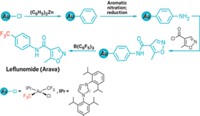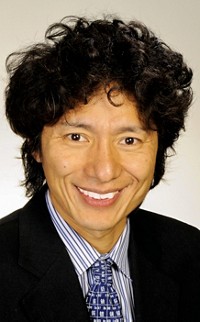Advertisement
Grab your lab coat. Let's get started
Welcome!
Welcome!
Create an account below to get 6 C&EN articles per month, receive newsletters and more - all free.
It seems this is your first time logging in online. Please enter the following information to continue.
As an ACS member you automatically get access to this site. All we need is few more details to create your reading experience.
Not you? Sign in with a different account.
Not you? Sign in with a different account.
ERROR 1
ERROR 1
ERROR 2
ERROR 2
ERROR 2
ERROR 2
ERROR 2
Password and Confirm password must match.
If you have an ACS member number, please enter it here so we can link this account to your membership. (optional)
ERROR 2
ACS values your privacy. By submitting your information, you are gaining access to C&EN and subscribing to our weekly newsletter. We use the information you provide to make your reading experience better, and we will never sell your data to third party members.
Biological Chemistry
ACS Award For Creative Work In Fluorine Chemistry
by Manny Morone
January 12, 2015
| A version of this story appeared in
Volume 93, Issue 2

Sponsored by the Juhua Group Technology Center (China)
At 50, Véronique Gouverneur is relatively young to be an award-winning professor. But after making fluorine-18 radiotracers with a 110-minute half-life, it’s no surprise that she’s been quick out of the gate.
Gouverneur has garnered recognition for her innovative syntheses of radiotracers for positron emission tomography (PET). Old tricks generally don’t work for putting 18F atoms on small molecules (C&EN, July 14, 2014, page 33). Because of 18F’s short half-life, reactions for making radiotracers need to be very clean as well as fast, yielding a high-purity, immediately usable product. That goal seems daunting, but PET’s potential to image cancers and other diseases makes it worthwhile. This sort of intellectual challenge and intriguing application is exactly why Gouverneur got into fluorination in the first place.
Before stepping into radiochemistry labs, Gouverneur joined the University of Oxford’s faculty in 1998, starting her fluorination program in 2000. Only in recent years has the organic community recognized fluorination as something important to look at, and Gouverneur’s lab has been at the forefront. Her lab made a name for itself—and organofluorine chemistry—by putting fluorine-containing functional groups onto molecules of clinical value used for small-molecule drug synthesis or PET imaging.
As she started in the field, Gouverneur discovered she could introduce fluorine onto organosilanes using “F+” reagents, sources of electrophilic fluorine such as Selectfluor and N-fluorinated cinchona alkaloids. Her unique use of organosilanes opened doors to the more comprehensive study of fluorine’s effect on the reaction dynamics of small molecules.
The Gouverneur lab has since switched its primary focus from organosilanes to catalysis, exploring the value of transition-metal catalysis for the chemo-, regio- and stereoselective fluorination of nonarene substrates. According to Gouverneur, halogen-promoted addition of various nucleophiles to alkenes is one of the most fundamentally important and challenging reactions in organic chemistry. Yet its expansion to the preparation of chiral, nonracemic fluorinated molecules from prochiral substrates—an interest of Gouverneur’s—had not been previously considered. In one example, her team synthesized substituted, chiral Selectfluor analogs to boost the reagent’s activity and achieved asymmetric fluorocyclization, revealing easier, widely applicable pathways to fluorinated natural products.
And Gouverneur isn’t out of gas yet. “I’m not going to restrict myself to developing new chemistry for late-stage fluorination and for labeling,” she says. “Further fundamental understanding of the complexity of these processes and the impact of the reagent type on reactivity is critically important.”
As she continues her work in radiotracer synthesis and hopefully into the clinic, Gouverneur plans to incorporate more 18F-containing functional groups to ascertain and leverage their distinct activities in the body. “Fluorine comes in different sizes and shapes: SCF3, OCF3, CHF2, CF2CF3 groups,” for example. “None of those are represented in 18F labeling and 18F PET ligands.”
Her colleagues think she’s up to it. “Véronique has a real passion for moving the field of fluorination forward,” says organofluorine chemist Tobias Ritter of Harvard University. “Maybe most importantly for the community, she is a wonderfully encouraging, collegial, and nurturing scientific leader, dedicated to solving the big problems.”
Gouverneur will present her award address before the Division of Fluorine Chemistry at the spring 2015 ACS national meeting and the Biennial Winter Fluorine Conference in January 2016.





Join the conversation
Contact the reporter
Submit a Letter to the Editor for publication
Engage with us on Twitter